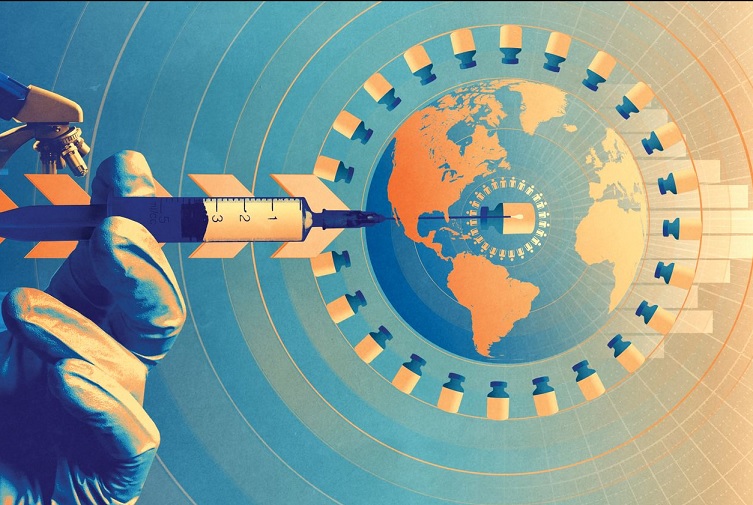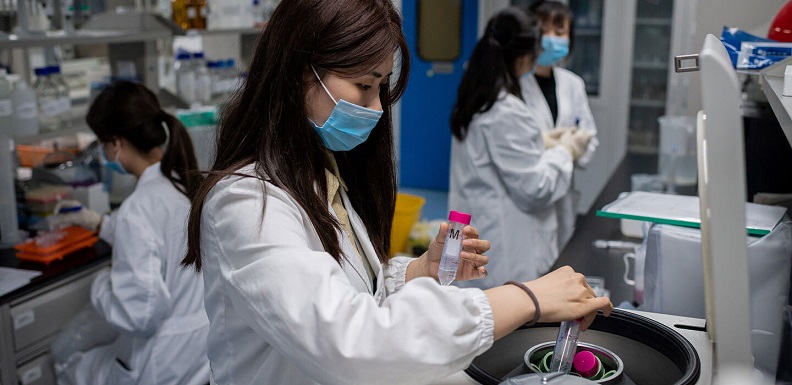Take a Minute to Appreciate the Science Behind the Coronavirus Vaccines

As more of us get the vaccine, particularly friends and family who work in health care — thank you for all that you do! — it’s worth reflecting on the genius, passion, and raft of hard-won scientific insight on which these vaccines rest. This post from evolutionary biologist Jerry Coyne dives into the technology and engineering behind BioNTech/Pfizer’s mRNA vaccine, the one that most people seem to have received so far (though Moderna’s works much the same way). Learning more about what went into this unprecedented endeavor can help crystallize the significance of this moment. It’s a lot more than a jab in the arm.
The New York Times, courtesy of one of my favorite science journalists Carl Zimmer, has already put out individualized breakdowns of each of these vaccines here and here (as well as several others approved for emergency use). But Coyne’s post goes into more detail, including how the genetic code used in the vaccine was initially entered into DNA printers (those exist) which then converted the bytes on disk to actual DNA molecules. You don’t need to understand the niceties of nucleotides to marvel at what our best and brightest managed to achieve this year. And taking a few minutes out of our day as an expert walks us through it helps us better appreciate how we arrived at this moment and the sheer complexity of the science involved.
Over at Science Magazine, Derek Lowe brings us up to speed on the spate of development research on mRNA vaccines in the years leading up to the pandemic. The immune system is obnoxiously intricate, so much so that a vaccine which triggers too strong of a response can be rendered ineffective as the body’s innate immunity quashes the viral proteins before they have a chance to make it into your cells. It’s a balancing act between the innate and adaptive immune systems, and we didn’t stumble upon the right formula by accident. These techniques, as Derek points out, have been carefully honed over decades of empirical study, and they essentially paid “off just in time for the current pandemic.”
This preparatory work in large part explains how scientists were able to churn out the initial batch of vaccines so quickly. Zooming out for a moment, many of us still haven’t quite fathomed the dizzying pace at which science operated over the last year. The typical lead time for a vaccine product is in the ballpark of ten to fifteen years. For SARS-CoV-2, we went from having the genome sequenced and uploaded to the internet on January 10th of last year to robust Phase 3 clinical trial data in 300 days. Moderna reportedly took just two days to finalize the design of their mRNA vaccine after the sequence data was posted online. Thanks to years of groundwork and the collective efforts of scientists around the world, we decoded a deadly virus, organized clinical trials, and began distribution of two promising vaccines — all inside of a year.
This stunning series of events was helped along by hard work, and a few lucky breaks, to be sure, but we were able to accomplish this feat because the science behind these vaccines is well established. Their formulation builds on previous depth of knowledge about genetic instructions, protein structure, DNA & RNA sequencing, and viral evolution, while their rapid rollout stems from advances in scalable technology and large-scale trial design. We also owe an enormous debt to Professor Zhang in China, who set a precedent for open data sharing when he bravely ignored threats from above by releasing the initial sequence of the coronavirus on that seminal day last January.
The Covid-19 pandemic has inflicted an incalculable toll on human life, but we’d be remiss not to acknowledge the reality of our scientific successes. We’ve faced down pandemics in the past, but never have we mobilized our scientific and technological arsenal the way we did in 2020. The quiet, steady toil of research that’s played out across generations, and the selfless actions of Chinese whistleblowers, represent “the perfect example of why we can see further by standing on the shoulders of giants.”
Further reading:
- The mRNA coronavirus vaccine: a testament to human ingenuity and the power of science
- The tangled history of mRNA vaccines
- Eric Topol on Twitter: mRNA Vaccine Milestones
- Reverse Engineering the source code of the BioNTech/Pfizer SARS-CoV-2 Vaccine
- What are mRNA vaccines and how do they work?
- mRNA Vaccines: What Happens
- Moderna’s groundbreaking coronavirus vaccine was designed in just 2 days
- Ten reasons we got Covid-19 vaccines so quickly without ‘cutting corners’
- The Pandemic Heroes Who Gave us the Gift of Time and Gift of Information
- Coronavirus Vaccine Tracker
- Every Covid-19 Vaccine Question You’ll Ever Have, Answered
Feature image credit: Illustration by Andy Potts



Comments